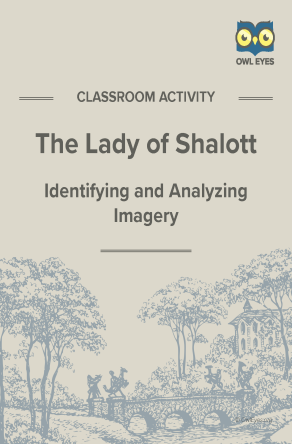The Lady of Shalott Imagery Worksheet
- 8 pages
- Subject: Imagery, Literary Devices, Tone, Lesson Plans and Educational Resources
- Common Core Standards: RL.11-12.1, RL.11-12.4, RL.11-12.5, RL.9-10.1, RL.9-10.4
- Grade Levels: 9, 10, 11, 12
Product Description
The first version of Alfred, Lord Tennyson’s “The Lady of Shalott” appeared in his collection Poems in 1832. Negative reviews motivated heavy revision, and the second, more famous “Lady” was published in 1842. This second iteration has gone on to be one of the Victorian poet’s most famous works, providing inspiration for numerous artists with the tragic tale of its titular protagonist. Tennyson draws from Arthurian legends for his narrative of the Lady of Shalott, linking the medieval tradition with more modern questions regarding artistic integrity and female empowerment. Throughout, he draws upon multiple types of imagery to evoke the poetic tradition of Arthurian lays and to build a metaphorical, otherworldly setting for his characters to inhabit.
Skills: analysis, drawing inferences from text, close reading, identifying the relationship between words
About This Document
The Owl Eyes Imagery activity gives students an opportunity to practice identifying and analyzing imagery. Imagery within a text creates a sensory experience that can connect readers to a text’s setting, atmosphere, or overall aesthetic. Studying imagery will help students understand how narrators or principal characters feel. The main components of this worksheet include the following:
- A brief introduction to the text
- A handout on types of imagery with examples from classic texts
- A step-by-step guide to activity procedure
- Selected examples of imagery from the text
In completing this worksheet, students will learn to identify and analyze different kinds of imagery in order to develop close reading skills and identify the effect imagery has on their reading experience.







